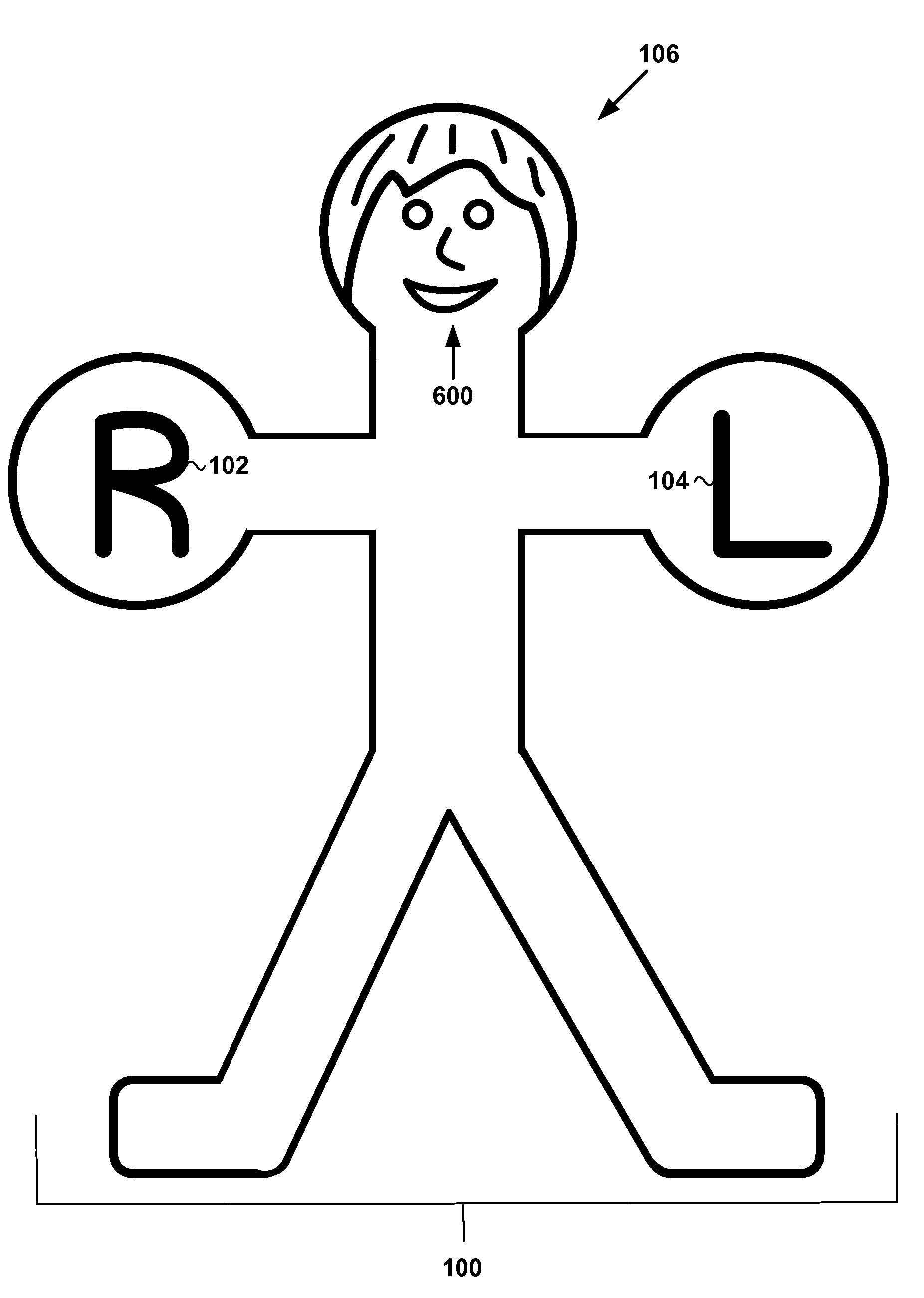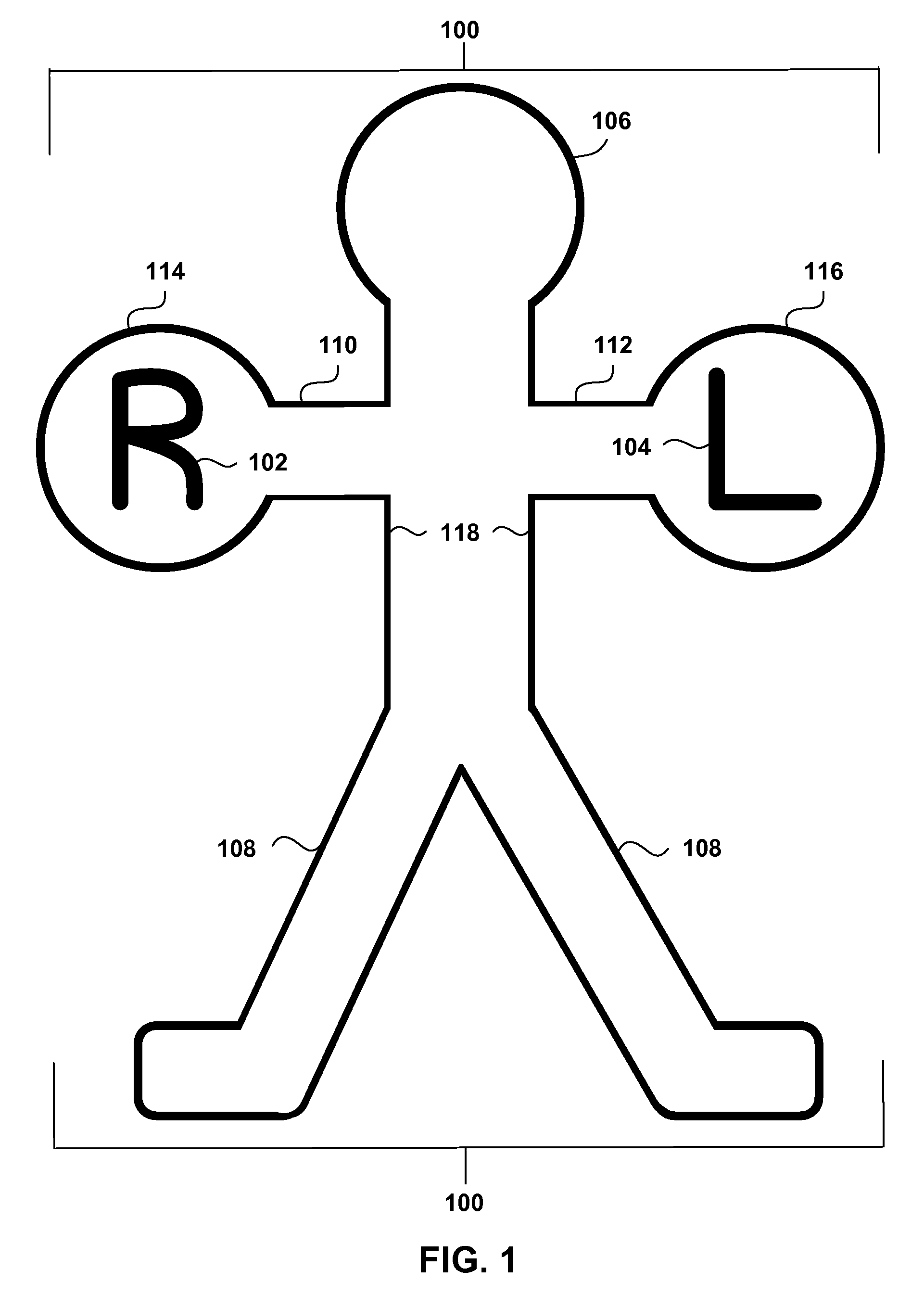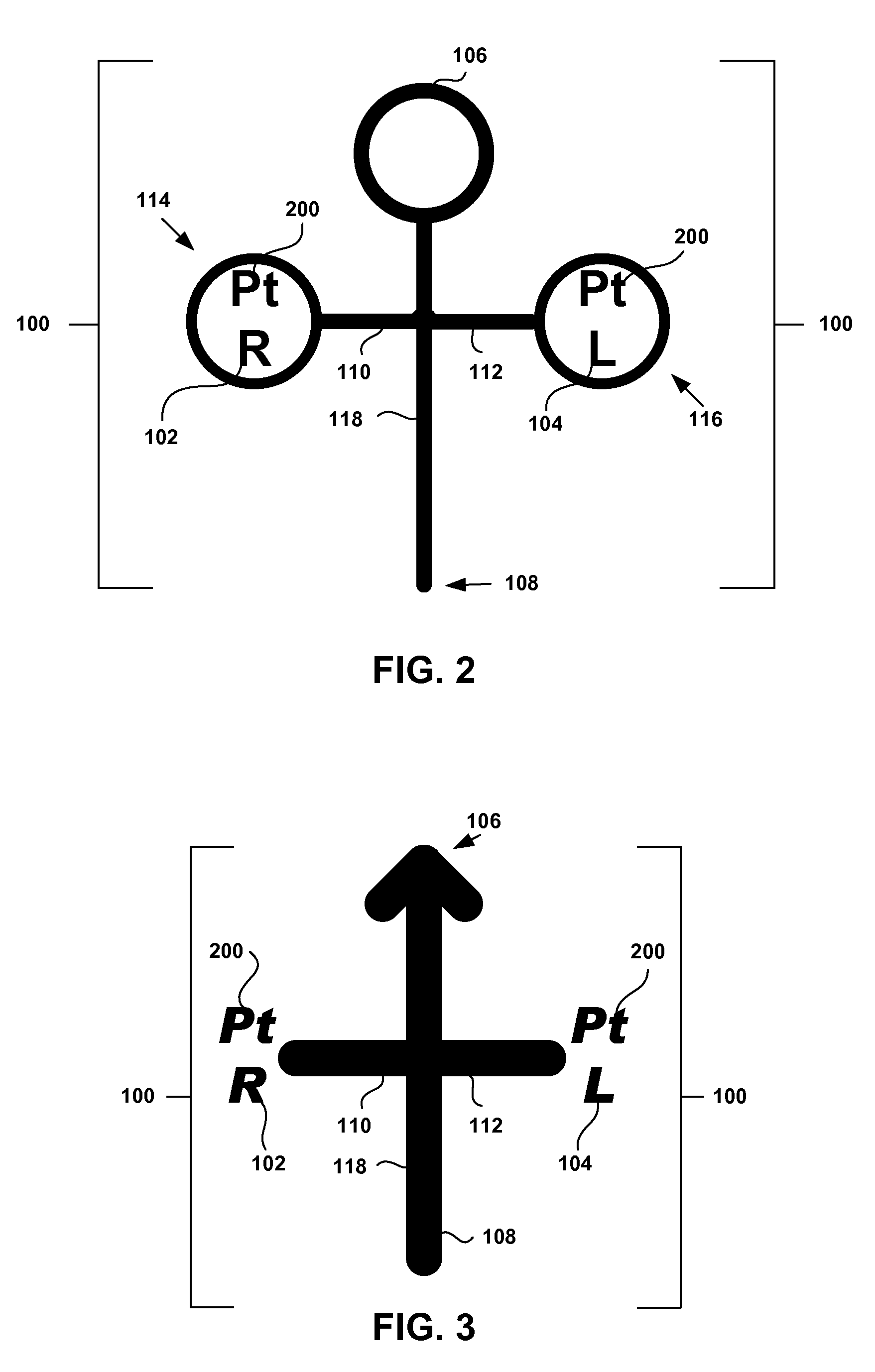Anatomical marker for x-ray orientation
a technology of anatomical markers and x-rays, applied in optics, instruments, electrical equipment, etc., can solve the problems of difficult to ascertain the body position of a patient in a given fluoroscopy image, difficult to quickly, clearly, and confidently delineate left, right, and cranio-caudal positions, and markers in the related art consistently do not provide simultaneous orientation as to antero-posterior and cranio
- Summary
- Abstract
- Description
- Claims
- Application Information
AI Technical Summary
Benefits of technology
Problems solved by technology
Method used
Image
Examples
Embodiment Construction
[0036]In the following description of the preferred embodiments, reference is made to the accompanying drawings that form a part hereof, and in which is shown by way of illustration specific embodiments in which the invention may be practiced. It is to be understood that other embodiments may be utilized and structural changes may be made without departing from the scope of the present invention.
[0037]To aid in a basic understanding of a possible simplified embodiment of the present invention, and referring generally to the figures and numeric references throughout, marker 100 can be embedded in radiolucent material 400 with first side indicator 102, second side indicator 104, cranial indicator 106, caudal indicator 108, anterior indicator 600, and posterior indicator 700.
[0038]It will be understood that “x-ray” can refer to any radiological technique. It will be understood that “radiological image,”“fluoroscopy image,”“x-ray image,” and “image” can be used interchangeably and can e...
PUM
 Login to View More
Login to View More Abstract
Description
Claims
Application Information
 Login to View More
Login to View More - R&D
- Intellectual Property
- Life Sciences
- Materials
- Tech Scout
- Unparalleled Data Quality
- Higher Quality Content
- 60% Fewer Hallucinations
Browse by: Latest US Patents, China's latest patents, Technical Efficacy Thesaurus, Application Domain, Technology Topic, Popular Technical Reports.
© 2025 PatSnap. All rights reserved.Legal|Privacy policy|Modern Slavery Act Transparency Statement|Sitemap|About US| Contact US: help@patsnap.com



